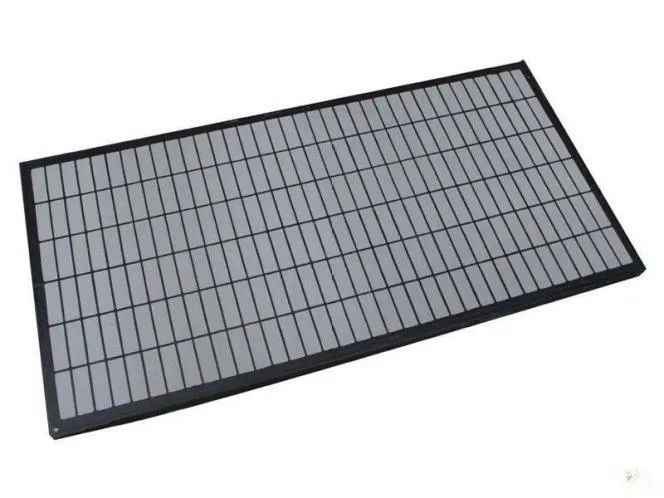- Industrial zone, South of Anping Town, Hengshui, Hebei, China.
- sales@hfpetromesh.com
- +86-18931809706
 Afrikaans
Afrikaans  Albanian
Albanian  Amharic
Amharic  Arabic
Arabic  Armenian
Armenian  Azerbaijani
Azerbaijani  Basque
Basque  Belarusian
Belarusian  Bengali
Bengali  Bosnian
Bosnian  Bulgarian
Bulgarian  Catalan
Catalan  Cebuano
Cebuano  Corsican
Corsican  Croatian
Croatian  Czech
Czech  Danish
Danish  Dutch
Dutch  English
English  Esperanto
Esperanto  Estonian
Estonian  Finnish
Finnish  French
French  Frisian
Frisian  Galician
Galician  Georgian
Georgian  German
German  Greek
Greek  Gujarati
Gujarati  Haitian Creole
Haitian Creole  hausa
hausa  hawaiian
hawaiian  Hebrew
Hebrew  Hindi
Hindi  Miao
Miao  Hungarian
Hungarian  Icelandic
Icelandic  igbo
igbo  Indonesian
Indonesian  irish
irish  Italian
Italian  Japanese
Japanese  Javanese
Javanese  Kannada
Kannada  kazakh
kazakh  Khmer
Khmer  Rwandese
Rwandese  Korean
Korean  Kurdish
Kurdish  Kyrgyz
Kyrgyz  Lao
Lao  Latin
Latin  Latvian
Latvian  Lithuanian
Lithuanian  Luxembourgish
Luxembourgish  Macedonian
Macedonian  Malgashi
Malgashi  Malay
Malay  Malayalam
Malayalam  Maltese
Maltese  Maori
Maori  Marathi
Marathi  Mongolian
Mongolian  Myanmar
Myanmar  Nepali
Nepali  Norwegian
Norwegian  Norwegian
Norwegian  Occitan
Occitan  Pashto
Pashto  Persian
Persian  Polish
Polish  Portuguese
Portuguese  Punjabi
Punjabi  Romanian
Romanian  Russian
Russian  Samoan
Samoan  Scottish Gaelic
Scottish Gaelic  Serbian
Serbian  Sesotho
Sesotho  Shona
Shona  Sindhi
Sindhi  Sinhala
Sinhala  Slovak
Slovak  Slovenian
Slovenian  Somali
Somali  Spanish
Spanish  Sundanese
Sundanese  Swahili
Swahili  Swedish
Swedish  Tagalog
Tagalog  Tajik
Tajik  Tamil
Tamil  Tatar
Tatar  Telugu
Telugu  Thai
Thai  Turkish
Turkish  Turkmen
Turkmen  Ukrainian
Ukrainian  Urdu
Urdu  Uighur
Uighur  Uzbek
Uzbek  Vietnamese
Vietnamese  Welsh
Welsh  Bantu
Bantu  Yiddish
Yiddish  Yoruba
Yoruba  Zulu
Zulu
- Afrikaans
- Albanian
- Amharic
- Arabic
- Armenian
- Azerbaijani
- Basque
- Belarusian
- Bengali
- Bosnian
- Bulgarian
- Catalan
- Cebuano
- Corsican
- Croatian
- Czech
- Danish
- Dutch
- English
- Esperanto
- Estonian
- Finnish
- French
- Frisian
- Galician
- Georgian
- German
- Greek
- Gujarati
- Haitian Creole
- hausa
- hawaiian
- Hebrew
- Hindi
- Miao
- Hungarian
- Icelandic
- igbo
- Indonesian
- irish
- Italian
- Japanese
- Javanese
- Kannada
- kazakh
- Khmer
- Rwandese
- Korean
- Kurdish
- Kyrgyz
- Lao
- Latin
- Latvian
- Lithuanian
- Luxembourgish
- Macedonian
- Malgashi
- Malay
- Malayalam
- Maltese
- Maori
- Marathi
- Mongolian
- Myanmar
- Nepali
- Norwegian
- Norwegian
- Occitan
- Pashto
- Persian
- Polish
- Portuguese
- Punjabi
- Romanian
- Russian
- Samoan
- Scottish Gaelic
- Serbian
- Sesotho
- Shona
- Sindhi
- Sinhala
- Slovak
- Slovenian
- Somali
- Spanish
- Sundanese
- Swahili
- Swedish
- Tagalog
- Tajik
- Tamil
- Tatar
- Telugu
- Thai
- Turkish
- Turkmen
- Ukrainian
- Urdu
- Uighur
- Uzbek
- Vietnamese
- Welsh
- Bantu
- Yiddish
- Yoruba
- Zulu
Guidelines for Selecting and Using Steel Grating in Construction Projects
Understanding Steel Grating Specifications
Steel grating is a vital component used in various industries such as construction, manufacturing, and infrastructure development. It provides safety, durability, and functional advantages in numerous applications, including walkways, platforms, drainage covers, and stair treads. Given the significance of steel grating, understanding its specifications is essential for selecting the right product for your needs.
When discussing steel grating specifications, several key parameters come into play
. These include material type, load capacity, spacing, dimensions, and surface treatment.Material Type The most common materials for steel grating are carbon steel, stainless steel, and aluminum. Carbon steel grating is known for its strength and cost-effectiveness, making it suitable for general use. Stainless steel grating, on the other hand, offers excellent resistance to corrosion and is ideal for environments exposed to harsh chemicals or moisture. Aluminum grating is lightweight and rust-resistant, making it a great choice for portable applications.
Load Capacity One of the primary considerations when selecting steel grating is its load capacity, often specified in pounds per square foot (psf). This specification determines how much weight the grating can safely support without deformation or failure. Load capacities can vary significantly based on the material used and the spacing of the bearing bars. It is crucial to assess the expected load during use to ensure that the grating can accommodate it reliably.
steel grating specifications

Spacing and Dimensions The dimensions of steel grating are specified by the width and depth of its bearing bars, as well as the spacing between them. Common configurations include 19W4, where 19 refers to the spacing between the bearing bars in 19mm and 4 refers to the depth of the bar. Proper spacing is critical for providing support while allowing for adequate drainage and easy movement.
Surface Treatment The surface finish of steel grating significantly influences its performance and longevity. Common treatments include hot-dipped galvanization, which offers robust corrosion resistance, and painted finishes that provide aesthetic qualities. Non-slip surfaces can also be added to enhance safety, particularly in wet or hazardous environments.
Additionally, it is important to consider regulatory standards and codes that apply to your specific industry or location. Many jurisdictions have stringent safety requirements that must be adhered to, ensuring that the steel grating you select meets these criteria.
In summary, understanding steel grating specifications is critical for selecting the appropriate type for your application. By considering material type, load capacity, dimensions, and surface treatments, you can ensure that you choose a product that not only meets your functional requirements but also adheres to safety standards. Whether for industrial, commercial, or residential use, the right steel grating can provide the necessary support and safety for years to come.
-
Welded Steel Bar Grating: The Rugged Industrial Flooring Solution Built for Load and LongevityNewsJun.24,2025
-
Steel Walkway Grating: Reliable, Resilient, and Built for Every StepNewsJun.24,2025
-
Shale Shaker Screen for Sale: Optimize Drilling Efficiency with Precision Screening PowerNewsJun.24,2025
-
Shaker Screen for Sale: Elevate Your Drilling Efficiency with Durable Separation SolutionsNewsJun.24,2025
-
Press Locked Steel Grating: Industrial Strength with Precision Fit for Heavy-Duty ApplicationsNewsJun.24,2025
-
Perimeter Safety Netting: The Critical Safety Upgrade for Every HelipadNewsJun.24,2025